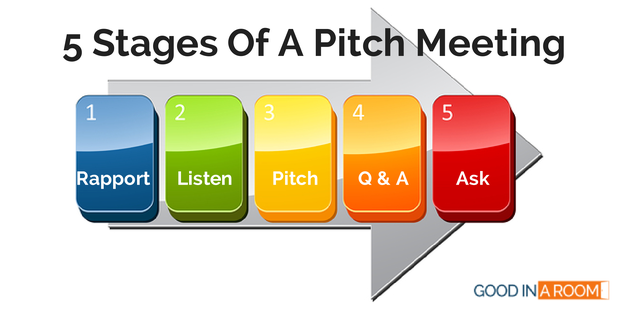Pitch Meetings Structure Stage 2: Ask questions and listen to show respect

Pitch Meeting Stage 2: Listening
The goal: to show respect for the decision-maker
In Stage 2, your job is to ask good questions and listen. This shows respect for the decision-maker, and earns you more of their attention when the time comes to pitch.
The trap: showing off how smart you are
Superior intelligence can be your worst enemy at this stage of the meeting.
In the next stage, when the time comes to pitch, that’s when you get to share your brilliant ideas. At this stage, your job is to ask questions, listen, and show respect.
If you show off how smart you are in this stage, it may seem like you are in need of attention and approval (the opposite of confidence). As well, if the decision-maker can’t understand what you’re saying, you may make them feel awkward or threatened.
This isn’t about being fake and hiding yourself. It’s about understanding that before you pitch, you want to build rapport (Stage 1) and show respect by listening (Stage 2).
Key tactic: prepare questions to gather information
Get the decision-maker talking, e.g.:
- “Is there a particular kind of project you’d love to find?”
- “How is (current project) going?”
PROCEED to STAGE 3
————————————————————————————–
Pitch Meetings Happen In Five Stages
- In Stage 1, you build rapport and warm up the room.
- In Stage 2, you ask questions and listen to show respect.
- In Stage 3, you deliver the prepared component of your pitch.
- In Stage 4, you deliver the “improvised” component of your pitch.
- In Stage 5, you ask for one thing if necessary and leave on a good note.

